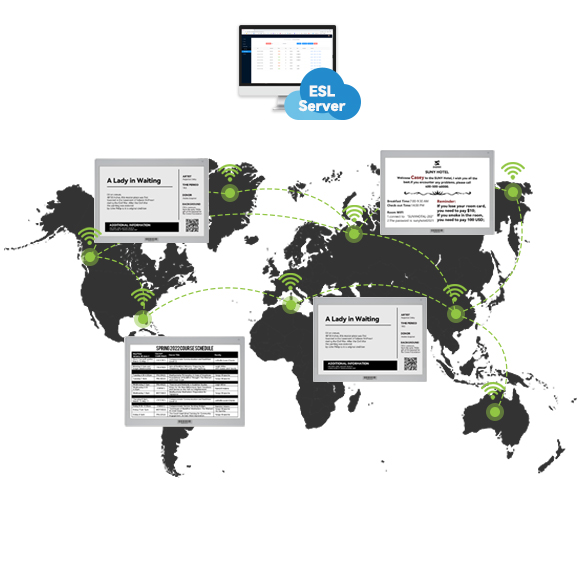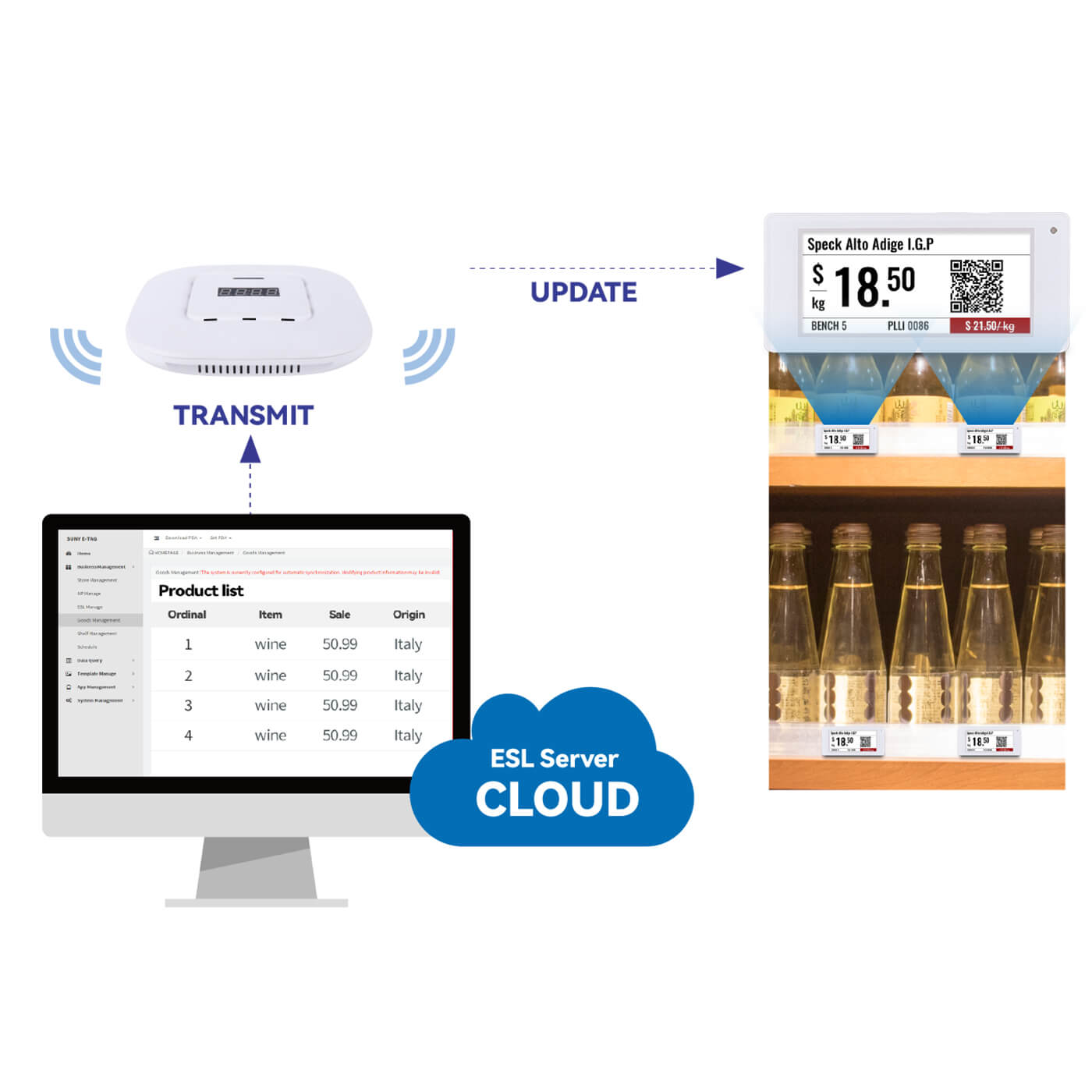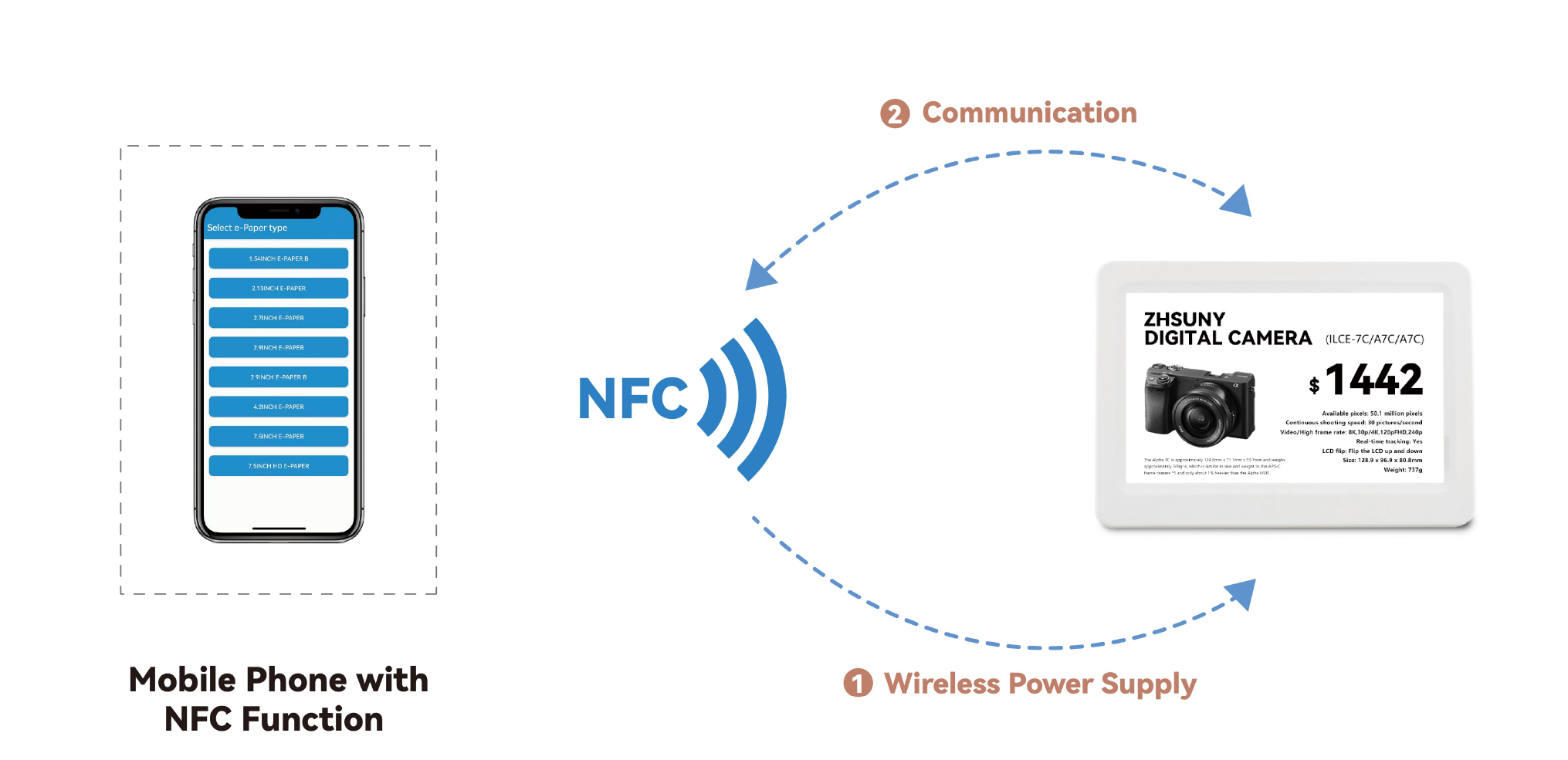In the competitive retail landscape, efficiency and accuracy are key to ensuring a seamless shopping experience and effective store management. WiFi Electronic Shelf Labels (WiFi ESL) are one of the latest innovations helping retailers achieve these goals. In this blog, we’ll explore the working principles of WiFi ESL and understand how they are transforming the retail industry.
What is a WiFi Electronic Shelf Label?
A WiFi Electronic Shelf Label (WiFi ESL) is a digital price tag that uses WiFi technology to update and display product information on retail shelves. Unlike traditional paper labels, WiFi ESLs provide real-time updates and can be managed remotely, offering a more efficient and flexible solution for retailers.
Key Components of WiFi ESL
- Digital Display:
The display of a WiFi ESL typically uses e-ink technology, known for its low power consumption and excellent readability. E-ink displays can show various types of information, including prices, product names, barcodes, and promotional messages. - WiFi Module:
The WiFi module is the core component that enables wireless communication. It allows the ESL to connect to the store’s WiFi network and receive updates from a central management system. - Central Management System:
This system, often cloud-based, manages all the ESLs within a store. It sends updates and commands to the ESLs via the WiFi network. The central system can be integrated with the store’s inventory and pricing management software for seamless operations. - Battery:
WiFi ESLs are powered by small batteries. Despite the continuous connectivity, the low power consumption of e-ink displays helps extend the battery life, often lasting several years.
How Does WiFi ESL Work?
- Data Preparation:
The central management system prepares the data that needs to be displayed on the ESLs. This data includes pricing, product information, and any promotional details. - Data Transmission:
The prepared data is transmitted wirelessly over the store’s WiFi network to the ESLs. This process allows for quick and efficient updates without the need for physical intervention. - WiFi Communication:
Each ESL has a unique identifier, allowing the central system to send specific updates to individual labels. The WiFi module in the ESL receives the data and processes it. - Display Update:
Once the data is received, the ESL updates its e-ink display to show the new information. This process is fast and ensures that the information on the shelves is always up-to-date.
Advantages of WiFi ESL
- Real-time Updates: Prices and product information can be updated instantly, eliminating the need for manual label changes.
- Remote Management: Labels can be managed and updated remotely, providing flexibility and reducing the need for in-store labor.
- Accuracy: Reduces human error in pricing and ensures consistency across all labels.
- Cost-effective: Although the initial investment is higher, the long-term savings on labor and paper labels are significant.
- Enhanced Customer Experience: Provides clear and accurate information, improving the shopping experience.
Conclusion
WiFi Electronic Shelf Labels (WiFi ESL) represent a significant advancement in retail technology. By leveraging WiFi technology and e-ink displays, these labels offer a reliable, efficient, and cost-effective solution for modern retail environments. As technology continues to evolve, we can expect even more innovative applications of WiFi ESL in various industries.


